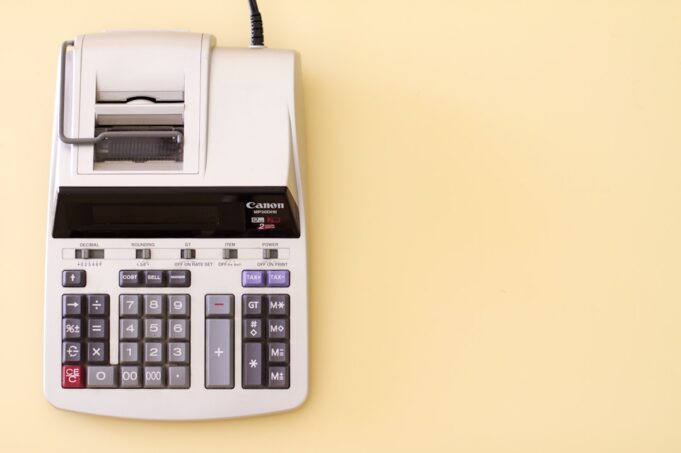Reconciliation software has become a cornerstone of efficient financial management for businesses of all sizes. In an age where accuracy and speed go hand-in-hand, the ability to reconcile financial records accurately and promptly is critical. Tools like the reconciliation system from ReconArt Inc can pivot your business toward more strategic initiatives, freeing up valuable time and resources. Below, we delve into the multifaceted benefits of integrating reconciliation software into your financial operations, and how it could transform your business’s processing landscape.
Understanding Reconciliation Software and Its Role in Streamlining Financial Operations
Reconciliation software is a dynamic solution that simplifies the task of comparing financial records to ensure they align perfectly. Designed to detect discrepancies, it aids businesses in maintaining accurate and consistent financial records. By automating what was traditionally a manual and error-prone process, reconciliation software brings reliability and efficiency to the forefront of financial operations. This software is crucial for companies dealing with high volumes of transactions, where manual reconciliation would be impractical and time-consuming.
At its core, reconciliation software functions by matching transactions from multiple records, such as bank statements and ledgers, to ensure that the figures are identical. This process, known as matching, is the first step in confirming that accounts accurately reflect all financial activities. When discrepancies are found, the software flags them for review, allowing businesses to promptly investigate and resolve any issues. This early detection of anomalies is instrumental in avoiding financial misstatements and maintaining the integrity of financial reports.
As businesses grow and transaction volumes increase, the likelihood of errors during the reconciliation process rises. Reconciliation software mitigates this risk by handling complex calculations and comparisons with ease. Advanced reconciliation solutions can cater to diverse types of reconciliation needs, including bank reconciliation, credit card reconciliation, and intercompany reconciliation, demonstrating the software’s capability to adapt to varying business requirements.
Enhancing Accuracy and Reducing Errors With Automated Reconciliation
In the drive toward optimal accuracy, automated reconciliation stands out as a game-changer. By eliminating the human element from the equation, the chance of manual errors dramatically decreases. Reconciliation software systematically checks and cross-verifies transactions, ensuring every entry is accounted for and matches corresponding figures across different accounts and statements. This kind of pinpoint precision is a fundamental requirement for maintaining a robust financial ecosystem within any business.
One of the most compelling aspects of automated reconciliation is its consistency. While human performance can fluctuate, software provides the same level of accuracy day in, day out, independent of volume fluctuations or complexity. This reliability lends peace of mind to financial managers and accountants who are responsible for the integrity of financial data. When reports are generated, stakeholders can trust that the information presented is both accurate and thoroughly vetted.
Furthermore, automated reconciliation systems have intelligent algorithms that can learn and adapt over time. They’re capable of recognizing patterns and can even help predict potential errors before they arise. This proactive approach not only corrects mistakes but also helps prevent them from occurring. As businesses operate in increasingly complex regulatory environments, the ability to preemptively address reconciliation issues becomes an invaluable asset.
The Impact of Reconciliation Software on Time Management and Productivity
The adage “time is money” rings especially true when it comes to financial operations. Reconciliation software significantly cuts down the time dedicated to the reconciliation process, freeing up finance teams to focus on more strategic tasks. When the need for manual checks and reconciliations is reduced, employees can redirect their attention to areas that contribute to the company’s growth, such as analysis and decision-making processes.
Time saved through the use of reconciliation software can also lead to greater productivity within the financial department. Tasks that may have taken days to complete can now be finalized in just a few hours. This accelerated pace not only boosts morale by lessening the burden on staff but also enables faster financial closing processes. Consequently, the entire organization benefits from the swift availability of financial data that is required for timely decision-making.
Moreover, when organizations depend less on manual processes, they can nimbly scale operations without a proportional increase in staffing. Firms can manage more significant volumes of transactions without a corresponding rise in human resources. This scalability is particularly advantageous for growing businesses that are looking to expand without incurring substantial increases in operational costs.
Overall, the integration of reconciliation software into your business’s financial toolkit is a strategic move that can yield significant advantages in accuracy, efficiency, risk management, and compliance. Elevated productivity and the potential for substantial cost savings make the investment worthwhile for many businesses. As organizations continue to navigate a complex financial landscape, the adoption of such technologically advanced solutions is not just an option—it’s becoming a necessity to maintain competitiveness and ensure financial integrity.


















![Otto Insurance Review [2024]: Does It Actually Offer Insurance? otto insurance](https://www.techpreview.org/wp-content/uploads/2024/04/otto-insurance-reviews-1-64d5cc741e012-238x178.webp)
